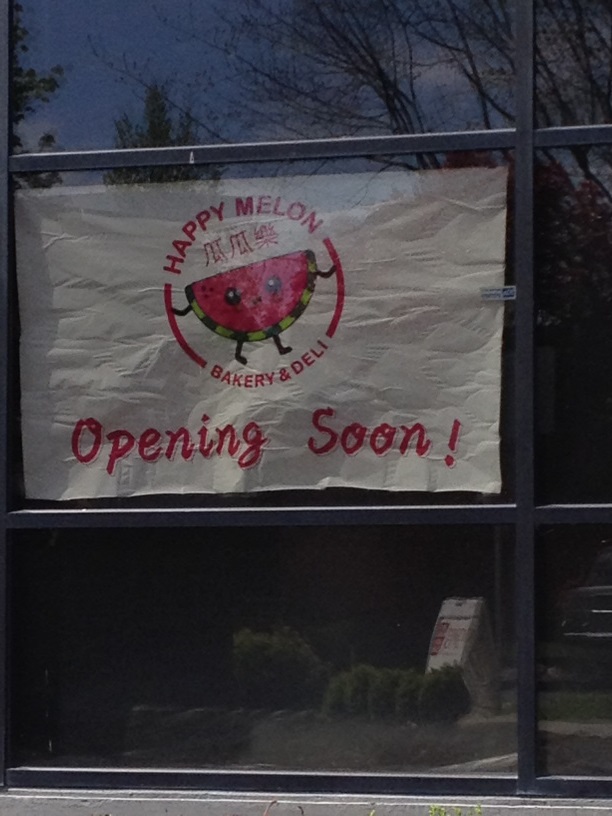There is a certain kind of home cook who believes the best way to get children to eat something other than pizza and chicken nuggets is to arrange food into facial portraits. A noodle nose, a pair of meatball eyes, and a big tomato-sauce smile might strike these kitchen artists as enchanting, but most kids aren’t buying it: Even eaters too young to be trusted with steak knives know better than to play with their food, as meals and games almost never mix at American tables.
A hearty sis-boom-bah, then, for Daisley Gordon’s Marché, the reimagined Campagne that opened this fall after a months-long hiatus. Play has a permanent spot on the menu at this lovely Pike Place Market bistro, which has jettisoned its white tablecloths and toppled the wall that stood between the bar and the dining room—and once signaled where fun ended and serious gourmandity began.
For $14, wine drinkers with a gambling bent can purchase what Marché calls an “extreme journey.” Here, three wines are served in smoky, opaque glasses—as dark inside as out, so it’s impossible to distinguish a red from white by sight. The wines are accompanied by an identification card that should be slid immediately beneath a plate for safekeeping, or relinquished to a teetotaling companion who feels like refereeing.
On some nights, a staffer told me, there’s a set of extreme-journey glasses on nearly every table. The gag’s popularity isn’t surprising: Opportunities for public gaming are awfully rare in the Angry Birds era of tuned-out solidarity. If old-time Westerns have it right, a cowboy couldn’t walk down a boomtown gangway without being hit up to risk his wages on an impromptu horse race or a hand of seven-card stud. Nowadays, a guy’s lucky to be drawn into a road-trip round of “What number am I thinking of?”
Marché plays fair in its extreme-journey selections. The lineup typically includes two giveaway varietals and a wild card. The night I took the drinking test, I was stumped by an oak-aged López de Heredia viura, which I mistook for a French picpoul that should have been served sooner. I wasn’t crazy about the wine, but I swirled, sniffed, and sipped with far more gusto than I might have had I randomly chosen it from a short list of affordable whites.
If you prefer your supper free of riddles, however, Marché has a few frisky diversions for wine drinkers: luxury wines served in thimble-sized portions ($8 buys an ounce-and-a-half of a 2006 Quilceda Creek Red, a bottle of which typically commands three figures in decent restaurants), a couple of Pacific Northwest wines poured directly from their barrels, and—for diners who can stand a touch of mystery, if not wit-matching—a bar-curated flight of three reds or three whites showcasing contrasting styles.
Marché is not a funhouse. There isn’t any danger of taking a wrong turn on the way to the restroom and running into a Skee-Ball machine. But the restaurant’s merry willingness to fiddle with the standard bottle-and-glass approach to wine service is infectious, and a welcome distraction when food sometimes falters. Marché is primed to educate and excite its guests about wine, just as so many local cocktail bars already serve as envoys for spirits—and at approximately the same price point.
Wine director Cyril Frechier, who filled that role at Rover’s for 17 years, has assembled a terrific list for non-millionaires. All but eight of the restaurant’s three dozen wines cost $50 or less, and the house red and white (French, bien sûr) sell for $5 a glass. Few wine bars are so admirably dedicated to keeping their lists from floating into the big-spending stratosphere, and fewer still offer such a graceful setting in which to scrutinize them.
When summer returns, Marché will no doubt appear sun-burnished and sprightly, but right now the dining room feels custom-made for winter. The wooden floor, the red leather banquette that occupies most of the room’s perimeter, the mirrors and framed Franch prints tacked to the walls, the cluster of gigantic Edison bulbs that functions as a chandelier, and the striking view of the market and Puget Sound beyond add up to a very warm, casually Old World space. When the restaurant is crackling with sophisticated conversation, it seems like a scene from a Whit Stillman film.
Between the ambience and the wine, Marché should be a petri dish for magical moments, but the spell is too often broken by lackluster food and service that inexplicably grows more neglectful as the night unfolds. It’s possible to be well-fed and -served at Marché, yet—perhaps appropriately for a restaurant that stages guessing games for oenophiles—it’s all a bit of a crapshoot.
When Gordon opened Marché after helming Campagne for 16 years, he said he wanted to simultaneously shorten and broaden the progenitor’s menu, incorporating different cuts of meat and reaching deeper into far-southern France and the Mediterranean, as well as swooping into north Africa for sassy flavors that don’t exist in regions ruled by root cellars. “This menu is sort of odd and peculiar in spurts, because I also had the freedom to use different influences,” he said. “I’m from Jamaica, so I like a little spice. I take whatever liberty I can to sprinkle that stuff in.”
There are herbs and offbeat meats alike in a linguine dish Gordon based on his Jamaican mother’s signature calf feet and dumplings, but the end result is just glum. The braised trotters discharge so much chewy gelatin that the fresh pasta’s sauce, dominated by carrots and parsley, made me think of Campbell’s Creamy Chicken Noodle soup. Wiggly, thin-cased sausages, pink as wind-burnt Scandinavian cheeks, also would benefit from sharper seasoning: Bits of chanterelles are visible, but didn’t register when tasted. Most of the flavor on the plate congregates in a garlicky mess of bitter greens.
Fortunately for pork devotees, there’s more swine at Marché. A competent pork-hock terrine, a checkerboard of ham chunks and fat, has the briny brashness of corned beef. It’s served with a dollop of stone-ground mustard and pickled green beans, completing the treif deli effect. Like an off-puttingly strong leek-and-egg custard tart, seated in a fluted crust that would win an A in home-ec class, the terrine cuts a handsome figure on its oblong wooden serving tray. There aren’t any presentation slouches in Marché’s kitchen.
What else is worth eating at Marché? A peppery omelet, stuffed according to the season, for one. Made rich and yellow by organic eggs, the rolled omelet’s joined by a poof of oiled butter-lettuce leaves that bring a surprising amount of razzmatazz to the most basic of bistro preparations. The quiet omelet is almost radically rustic, and—as Elizabeth David famously counseled—enormously enhanced by a glass or two of wine.
Marché also has a knack for potatoes. Rather than fussing with the unseared burger, glossed with sweated onions and rice vinegar, order a stand-alone serving of the slender, beautifully crisped French fries. The appetizer portion, packaged in a pretty white tureen, is huge.
But the best dish on Marché’s menu may be the onion and Parmesan gratin, a sort of French onion soup without the soup, or the continental equivalent of the chicken-skin fad that’s lately swept the American South. There’s nothing here but the good stuff. The gratin is a bubbly cobweb of sweet onions and umami-rich cheese, and most reasonable eaters wouldn’t object to eating it by the yard.
Marche has years of experience behind it, but still feels like a fairly young restaurant. The same puppy-dog excitement that inspires wine-list hijinks is also evident in servers who have a tendency to vanish and dishes which underwhelm. Yet while Marché may still have a few kinks to address, the restaurant’s promise is apparent to anyone with a window seat, a plate of gratin, and three concealed glasses of wine.
Price Guide
French fries $5
Pork hock terrine $8
Omelet $12
Onion gratin $10
Sausage $21
Calf’s trotter pasta $18








